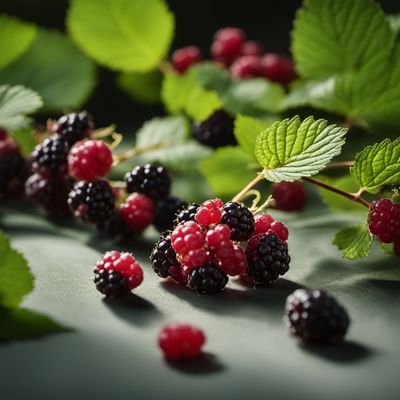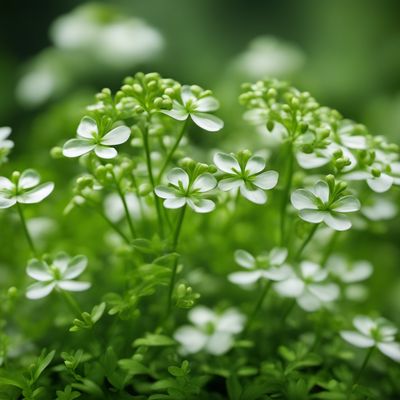
Ingredient
Cornflower infusion leaves
"The Vibrant Elixir: Unveiling the Beauty of Cornflower Infusion Leaves"
Cornflower infusion leaves, also known as Centaurea cyanus, are delicate, blue-violet petals that are commonly used to infuse liquids with their stunning hue. These leaves have a mild, slightly floral aroma and a subtle earthy taste. With their vibrant color and delicate texture, they are often used as a decorative element in salads, desserts, and cocktails.
Origins and history
Cornflower infusion leaves have a rich history dating back to ancient times. Native to Europe, these flowers were highly regarded for their medicinal properties and were used to treat various ailments. They were also commonly used in traditional herbal remedies and teas. Over time, cornflower infusion leaves gained popularity as a culinary ingredient and were incorporated into dishes across different cultures.
Nutritional information
Cornflower infusion leaves are low in calories and are not a significant source of nutrients. However, they do contain antioxidants that contribute to overall health and well-being.
Allergens
Cornflower infusion leaves are generally considered safe for consumption and are not known to cause allergies. However, individuals with known allergies to daisies or other members of the Asteraceae family should exercise caution.
How to select
When selecting cornflower infusion leaves, look for vibrant blue-violet petals that are free from blemishes or discoloration. Choose leaves that are fresh and have a strong aroma. Avoid wilted or dried-out leaves, as they may have lost their flavor and vibrant color.
Storage recommendations
To maintain the freshness and quality of cornflower infusion leaves, store them in an airtight container in a cool, dry place away from direct sunlight. Alternatively, you can freeze the leaves in ice cubes or dry them for later use.
How to produce
Cornflower infusion leaves can be grown in a home garden by planting seeds in well-drained soil and providing adequate sunlight. Regular watering and proper care will ensure healthy growth and abundant leaves for infusion.
Preparation tips
To infuse liquids with the vibrant color and delicate flavor of cornflower infusion leaves, simply steep the petals in hot water or other liquids for a few minutes. The resulting infusion can be used in beverages, desserts, or even as a natural dye for food. Additionally, the petals can be used as a decorative element in salads, cakes, or cocktails.
Culinary uses
Cornflower infusion leaves are commonly used to add a pop of color and subtle floral flavor to a variety of dishes and beverages. They can be used to infuse teas, lemonades, or cocktails, and are often incorporated into desserts such as cakes, pastries, and ice creams. Additionally, they make a beautiful garnish for salads, soups, and other savory dishes.
Availability
Cornflower infusion leaves are commonly available in Europe, particularly in countries like France, Germany, and the United Kingdom. They can also be found in specialty stores or online.
More ingredients from this category » Browse all

Sweet blackberry infusion leaves
The Berry's Aromatic Brew

Lime infusion leaves
Zesty Citrus Elixir: Unveiling the Magic of Lime Infusion Leaves

Marshmallow infusion leaves
The Sweet Essence of Nature

Sweet woodruff infusion leaves
Fragrant Elixir: Exploring the Delights of Sweet Woodruff Infusion Leaves

Oat infusion leaves
The Soothing Elixir: Oat Infusion Leaves

Bearberry infusion leaves
The Healing Power of Bearberry

Horehound infusion leaves
The Bitter Herbal Elixir

Mistletoe infusion leaves
The Magical Elixir: Mistletoe Infusion Leaves

Meadowsweet infusion leaves
The Nature's Elixir

Red clover infusion leaves
The Floral Elixir: Discovering the Delicate Flavor of Red Clover

Echinacea infusion leaves
The Healing Power of Echinacea

Eyebright infusion leaves
The Visionary Herb: Exploring the Benefits of Eyebright Infusion Leaves
